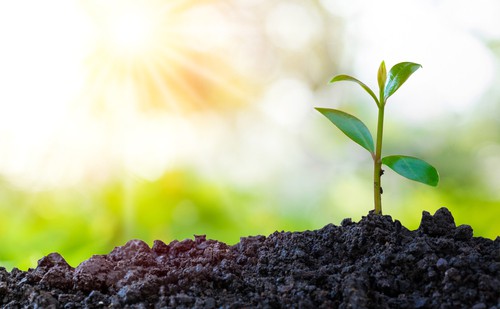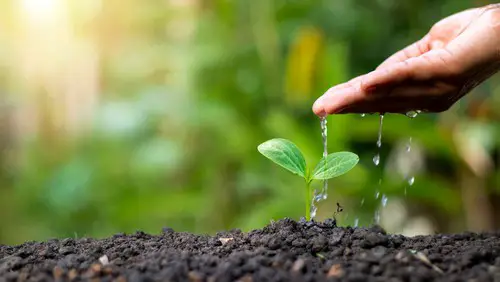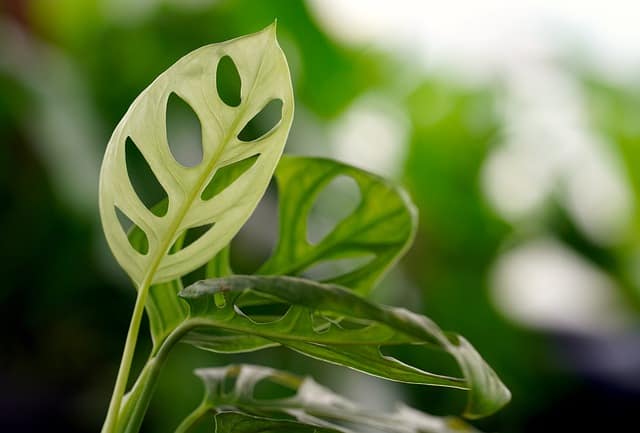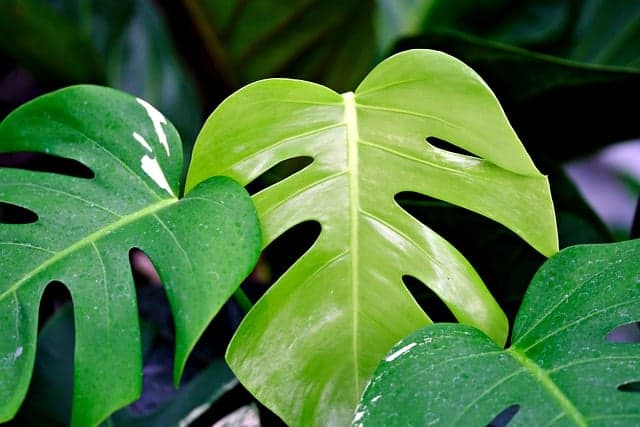Tiny brown spots on Monstera leaves are a common issue that many plant owners face. These spots can be alarming, especially if you’re unsure of what’s causing them. Understanding the causes of these brown spots is crucial to preventing further damage to your plant.
Monstera plants are tropical plants that are native to Central and South America. They are known for their large, glossy leaves that have unique patterns.
While Monstera plants are relatively easy to care for, they can be susceptible to a variety of issues, including brown spots on their leaves. These brown spots can be caused by a variety of factors, including environmental factors, plant care practices, and pests.
Key Takeaways
- Brown spots on Monstera leaves can be caused by a variety of factors, including environmental factors, plant care practices, and pests.
- Understanding the causes of brown spots is crucial to preventing further damage to your plant.
- Treatment and prevention strategies for brown spots on Monstera leaves include adjusting watering practices, managing pests, and providing the right environmental conditions.
Similar posts:
- Monstera Yellow Leaves with Brown Spots
- Brown Spots on Monstera Leaves
- Money Tree Leaves Turning Yellow with Brown Spots
Understanding Monstera Plants

Monstera plants, also known as Monstera deliciosa, are a popular tropical houseplant with large, glossy green leaves that can grow up to 3 feet long. These plants are native to the rainforests of Central and South America, where they grow as vines that climb up trees and other structures.
Monstera plants are relatively easy to care for and can thrive in a range of indoor environments. They prefer bright, indirect light and well-draining soil that is kept consistently moist but not waterlogged. These plants are also sensitive to cold temperatures and should be kept in a warm, humid environment.
One of the common issues that Monstera plants can face is the development of tiny brown spots on their leaves. These spots can be caused by a range of factors, including overwatering, underwatering, excess sunlight, low humidity, and pest infestations.
To prevent and treat brown spots on Monstera leaves, it is important to ensure that the plant is receiving the right amount of water and light. Additionally, increasing the humidity around the plant can help to prevent the development of brown spots and other issues.
Signs and Symptoms of Brown Spots
Monstera plants are known for their large, glossy green leaves that can grow up to three feet long. However, if you notice tiny brown spots on the leaves of your Monstera plant, it could be a sign of an underlying problem.
Brown spots on Monstera leaves can vary in size and shape, and they may be accompanied by other symptoms such as yellow halos, discoloration, or black spots. These symptoms can be caused by a variety of factors, including pests, diseases, environmental stress, or improper care.
One of the most common causes of brown spots on Monstera leaves is overwatering. When the soil is constantly moist, it can lead to root rot, which can cause brown spots and brown leaves. To prevent overwatering, make sure to let the soil dry out between waterings and avoid leaving your Monstera in standing water.
Another common cause of brown spots on Monstera leaves is low humidity. Monstera plants thrive in humid environments, and if the air is too dry, it can cause the leaves to develop brown spots and crispy edges. To increase humidity, you can mist your Monstera regularly or place a humidifier near the plant.
Pests such as spider mites, mealybugs, and scale insects can also cause brown spots on Monstera leaves. These pests feed on the plant’s sap, which can cause discoloration and brown spots. To get rid of pests, you can use insecticidal soap or neem oil, or wipe the leaves with a damp cloth.
In some cases, brown spots on Monstera leaves can be a sign of a fungal or bacterial infection. These infections can cause brown spots, black spots, or yellow halos on the leaves. To treat fungal or bacterial infections, you may need to remove the affected leaves and treat the plant with a fungicide or bactericide.
Tiny Brown Spots on Monstera Leaves – 6 Common Problems

Monstera plants are known for their beautiful, glossy leaves. However, if you notice tiny brown spots on the leaves of your Monstera plant, it could be a sign of an underlying problem. Here are some of the most common causes of brown spots on Monstera leaves:
1. Overwatering
Overwatering is one of the most common causes of brown spots on Monstera leaves. When the soil is constantly wet, it can lead to root rot and fungal growth. This can cause the leaves to turn yellow or brown and develop spots. It’s important to make sure that the soil is well-draining and that you are not watering the plant too frequently.
2. Underwatering
On the other hand, underwatering can also cause brown spots on Monstera leaves. When the plant is not getting enough water, it can become dehydrated and the leaves can develop brown, crispy edges. Make sure to water your Monstera plant regularly and consistently.
3. Sunburn
Monstera plants prefer bright, indirect light. If the plant is exposed to too much direct sunlight, it can lead to sunburn and brown spots on the leaves. Make sure to place your Monstera plant in a spot that gets bright, indirect light.
4. Low Humidity
Monstera plants prefer high humidity levels. If the air is too dry, it can cause the leaves to develop brown spots. You can increase the humidity around your Monstera plant by misting it regularly or using a humidifier.
5. Fungal Leaf Spot
Fungal leaf spot is a common disease that can affect Monstera plants. It is caused by fungi that thrive in warm, moist environments. The disease can cause brown spots on the leaves and can spread quickly if not treated promptly. To prevent fungal leaf spot, make sure to keep the leaves dry and avoid overwatering the plant.
6. Pest Infestation
Pests such as spider mites, thrips, and scale insects can also cause brown spots on Monstera leaves. These pests can suck the sap from the leaves, causing them to turn yellow or brown and develop spots.
To prevent pest infestations, make sure to keep your Monstera plant clean and free of debris, and inspect it regularly for signs of pests.
Role of Environmental Factors

The environment plays a significant role in the health of Monstera plants. The following are some of the environmental factors that can contribute to the development of tiny brown spots on Monstera leaves:
1. Sunlight
Monstera plants require bright, indirect light to thrive. Direct sunlight can cause the leaves to burn, while insufficient light can cause stunted growth and yellowing of leaves. It is recommended to place the plant in a location that receives bright, indirect light for several hours a day.
2. Watering
Overwatering or underwatering can lead to the development of brown spots on Monstera leaves. Monstera plants prefer to be kept moist but not too wet.
It is recommended to water the plant when the top inch of soil feels dry to the touch. Using rainwater or distilled water can also help prevent the accumulation of minerals in the soil that can cause brown spots.
3. Humidity Level
Monstera plants are native to tropical rainforests and prefer a humid environment. Low humidity levels can cause the leaves to dry out and develop brown spots.
It is recommended to place the plant in a location with a humidity level of at least 60%. Using a humidifier or placing a tray of water near the plant can also help increase humidity levels.
4. Water Quality
The quality of water used to water Monstera plants can also affect their health. Tap water can contain chlorine and other minerals that can accumulate in the soil and cause brown spots on the leaves. Using rainwater or distilled water can help prevent the accumulation of minerals in the soil.
5. Location
Monstera plants prefer to be kept in a warm location with temperatures between 65-85°F. Exposure to drafts or extreme temperatures can cause the leaves to dry out and develop brown spots.
Influence of Plant Care Practices
Proper plant care practices are crucial in maintaining the health of Monstera plants and preventing the occurrence of tiny brown spots on their leaves. Here are some of the factors that can influence the appearance of these spots and how to manage them:
1. Watering Schedule and Drainage

Overwatering or underwatering can cause brown spots on Monstera leaves. The soil should be moist but not waterlogged, and the plant should be watered only when the top inch of soil is dry. Proper drainage is also essential to prevent water from accumulating in the pot, which can lead to root rot and brown spots on the leaves.
2. Fertilizer and Nutrients
Monstera plants require regular fertilization to maintain their health and prevent brown spots on their leaves. However, overfertilization can also cause brown spots, so it is important to follow the recommended dosage and frequency.
Nutrient deficiencies can also cause brown spots, so it is important to ensure that the plant is receiving sufficient nutrients.
3. Size and Pruning
Monstera plants can grow quite large, and overcrowding can lead to brown spots on the leaves. Regular pruning can help manage the size of the plant and prevent overcrowding. It is also important to remove any dead or diseased leaves promptly to prevent the spread of infection.
4. Repotting and Soil Moisture
Monstera plants require well-draining soil, and repotting is necessary when the soil becomes compacted or waterlogged. It is also important to ensure that the soil moisture is consistent, as fluctuations can cause brown spots on the leaves.
5. Light Needs and Grow Lights
Monstera plants require bright, indirect light to thrive. Insufficient light can cause brown spots on the leaves, while too much direct sunlight can scorch the leaves. Grow lights can be used to supplement natural light and ensure that the plant is receiving sufficient light.
6. Filtered Water and Wounds
Monstera plants are sensitive to chemicals and minerals in tap water, which can cause brown spots on the leaves. Using filtered water can help prevent this. Wounds on the leaves can also lead to brown spots, so it is important to handle the plant carefully and avoid damaging the leaves.
Treatment and Prevention Strategies

When it comes to treating and preventing tiny brown spots on Monstera leaves, there are a few key strategies to keep in mind. These include managing watering habits, providing proper lighting, and being mindful of pests and diseases.
One of the most important steps in preventing brown spots on Monstera leaves is to ensure proper drainage. This can be achieved by using a well-draining soil mix and ensuring that the pot has adequate drainage holes.
Overwatering can lead to root rot, which can in turn cause brown spots on the foliage. It’s important to allow the soil to dry out slightly between waterings and to avoid letting the plant sit in standing water.
In addition to proper watering, Monstera plants require bright, indirect light to thrive. Too much direct sunlight can cause brown spots to appear on the leaves. If the plant is receiving too much light, it’s important to move it to a shadier location or provide filtered light.
On the other hand, if the plant is not receiving enough light, it may develop brown spots due to aging leaves. In this case, it’s important to trim off the affected leaves and provide more light.
Pests and diseases can also contribute to the development of brown spots on Monstera leaves. Common pests include scale and spider mites, which can be treated with neem oil or insecticidal soap.
Fungal infections can be treated with a fungicide, but it’s important to identify the specific type of fungus before treating. It’s also important to keep the plant’s foliage dry, as excess moisture can lead to fungal growth.
To prevent brown spots from developing in the first place, it’s important to provide a humid environment for the Monstera plant. This can be achieved by using a pebble tray or humidifier, or by misting the plant regularly.
Providing the plant with a balanced fertilizer can also help to ensure that it’s receiving the necessary nutrients, such as nitrogen and minerals, without overloading it with salts.
Frequently Asked Questions

What causes brown spots on Monstera leaves?
Brown spots on Monstera leaves can be caused by various factors such as overwatering, poor water quality, extreme temperatures, humidity, pests, and fungal diseases.
Root rot is one of the most common reasons for brown spots on Monstera plants, caused by too much water and not enough drainage.
How can I treat brown spots on my Monstera leaves?
The treatment for brown spots on Monstera leaves depends on the cause. If the cause is overwatering, it’s important to reduce watering frequency and ensure the soil is well-draining.
For fungal diseases, it’s recommended to remove infected leaves and use a fungicide. Pests can be managed by using insecticidal soap or neem oil.
Are brown spots on Monstera leaves a sign of disease?
Brown spots on Monstera leaves can be a sign of disease, but not always. It can also be caused by environmental factors such as overwatering, poor water quality, and extreme temperatures.
However, if the brown spots are accompanied by other symptoms such as wilting or yellowing, it’s recommended to inspect the plant for any signs of disease.
What are some common problems with Monstera leaves?
Apart from brown spots, common problems with Monstera leaves include yellowing, wilting, and leaf drop.
Yellowing can be caused by overwatering or nutrient deficiencies, while wilting can be caused by underwatering or root rot. Leaf drop can be caused by environmental stress or pests.
How do I prevent brown spots from appearing on my Monstera leaves?
To prevent brown spots from appearing on Monstera leaves, it’s important to ensure proper watering practices, use well-draining soil, and maintain moderate humidity levels.
Avoid exposing the plant to extreme temperatures and direct sunlight. Regularly inspect the plant for any signs of pests or disease.
Can Monstera leaves recover from brown spots?
Monstera leaves can recover from brown spots if the underlying cause is addressed and treated promptly. However, if the brown spots are severe and widespread, it may be difficult for the affected leaves to fully recover.
It’s recommended to remove severely infected leaves to prevent the spread of disease.

Hey, I’m Lisa and I’ve been an avid gardener for over 30 years. I love writing, talking and living in the garden! Feel free to connect with me on my socials below


